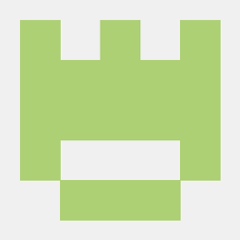ScaFi (Scala Fields)
ScaFi is a Scala-based library and framework for Aggregate Programming. It implements a variant of the Higher-Order Field Calculus (HOFC) operational semantics, which is made available as a usable domain-specific language (DSL), and provides a platform and API for simulating and executing Aggregate Computing systems and applications.
Please refer to the ScaFi main website and ScaFi Documentation the for further information.
Overview
Status Badges
Stable branch
Development branch
Notes for application developers
- NOTE:
scafi-coreandscafi-simulatorcross-target both the JVM and the JavaScript Platform (via Scala.js); however, packages for the latter are currently not released.
Import via Maven/sbt/Gradle
Add the dependency to scafi in your project, e.g., via sbt
// build.sbt
val scafi_version = "0.3.3"
val scafi_core = "it.unibo.scafi" %% "scafi-core" % scafi_version
val scafi_simulator = "it.unibo.scafi" %% "scafi-simulator" % scafi_version
val scafi_simulator_gui = "it.unibo.scafi" %% "scafi-simulator-gui" % scafi_version
val scafi_platform = "it.unibo.scafi" %% "scafi-distributed" % scafi_version
libraryDependencies ++= Seq(scafi_core, scafi_simulator, scafi_platform)
or Gradle
// build.gradle.kts
dependencies {
implementation("it.unibo.scafi:scafi-core_2.13:0.3.3")
}
Hello, ScaFi
- Consider the following repository: https://github.com/scafi/hello-scafi
As another example, consider the following steps.
Step 1: Import or define an incarnation (a family of types), from which you can import types like AggregateProgram
package experiments
// Method #1: Use an incarnation which is already defined
// (Note: BasicSimulationIncarnation is defined in module 'scafi-simulator')
import it.unibo.scafi.incarnations.BasicSimulationIncarnation.AggregateProgram
// Method #2: Define a custom incarnation and import stuff from it
object MyIncarnation extends it.unibo.scafi.incarnations.BasicAbstractIncarnation
import MyIncarnation._
Step 2: Define an AggregateProgram which expresses the global behaviour of an ensemble.
// An "aggregate program" can be seen as a function from a Context to an Export
// The Context is the input for a local computation: includes state
// from previous computations, sensor data, and exports from neighbours.
// The export is a tree-like data structure that contains all the information needed
// for coordinating with neighbours. It also contains the output of the computation.
object MyAggregateProgram extends AggregateProgram {
// Main program expression driving the ensemble
// This is run in a loop for each agent
// According to this expression, coordination messages are automatically generated
// The platform/middleware/simulator is responsible for coordination
override def main() = gradient(isSource)
// The gradient is the (self-adaptive) field of the minimum distances from source nodes
// `rep` is the construct for state transformation (remember the round-by-round loop behaviour)
// `mux` is a purely functional multiplexer (selects the first or second branch according to condition)
// `foldhoodPlus` folds over the neighbourhood (think like Scala's fold)
// (`Plus` means "without self"--with plain `foldhood`, the device itself is folded)
// `nbr(e)` denotes the values to be locally computed and shared with neighbours
// `nbrRange` is a sensor that, when folding, returns the distance wrt each neighbour
def gradient(source: Boolean): Double =
rep(Double.PositiveInfinity){ distance =>
mux(source) { 0.0 } {
foldhoodPlus(Double.PositiveInfinity)(Math.min)(nbr{distance}+nbrRange)
}
}
// A custom local sensor
def isSource = sense[Boolean]("source")
// A custom "neighbouring sensor"
def nbrRange = nbrvar[Double](NBR_RANGE_NAME)
}
Step 3: Use ScaFi's internal simulator and GUI (modules scafi-simulator and scafi-simulator-gui, respectively) to run the program on a predefined network of devices.
import it.unibo.scafi.simulation.gui.{Launcher, Settings}
object SimulationRunner extends Launcher {
Settings.Sim_ProgramClass = "experiments.MyAggregateProgram"
Settings.ShowConfigPanel = true
launch()
}
Alternatively, you can (a) implement your integration/middleware layer, or (b) leverages integration with the Alchemist simulator, for more sophisticated simulations. This and much more is described in the ScaFi Documentation Page.
ScaFi Architecture
From a deployment perspective, ScaFi consists of the following modules:
scafi-commons: provides basic entities (e.g., spatial and temporal abstractions)scafi-core: represents the core of the project and provides an implementation of the ScaFi aggregate programming DSL, together with its standard libraryscafi-simulator: provides a basic support for simulating aggregate systemsscafi-simulator-gui: provides a GUI for visualising simulations of aggregate systemsspala: provides an actor-based aggregate computing middlewarescafi-distributed: ScaFi integration-layer forspala
The modules to be imported (e.g., via sbt or Gradle) depend on the use case:
- Development of a real-world aggregate application. Bring
scafi-corein for a fine-grained integration. For more straightforward distributed system setup, take a look atscafi-distributed. - Play, exercise, and experiment with aggregate programming. Bring
scafi-corein for writing aggregate programs as well asscafi-simulator-guito quickly render an executing system. - Set up sophisticated simulations Bring
scafi-corein for writing aggregate programs and either (A) leverage the basic machinery provided byscafi-simulator, or (B) leverage the ScaFi support provided by Alchemist.
Release Highlights
0.3.3 (2020-04-10)
- Cross-compilation to Scala 2.13 (in addition to 2.11 and 2.12)
- Gradle build in addition to the sbt build
- 3D Renderer (by @AleGnucci)
- New simulator GUI (by @cric96)
- Handle serialization in spala and scafi-distributed (contribution by @manuelperuzzi)
- Various library fixes and adjustments
NOTE: for versions below the project's group ID is it.unibo.apiceteam.scafi (rather than the current it.unibo.scafi)
0.3.2 (2018-10-19)
- Aggregate processes with
spawnconstructs - Adjustments to operational semantics
- Refactoring of modules (e.g.,
stdlibbrought intocore) - More features in the standard library
- Bug fixes, tests, etc.
0.3.0 (2018-03-27)
stdlibmodulealignconstruct
0.2.0 (2017-06-28)
- Several important adjustments to the core operational semantics (and more tests)
- Refactoring of the field calculus interpreter
- A basic graphical simulator (contribution by C. Varini) has been added as a separate module
simulator-gui - Cross compilation for Scala 2.11 and 2.12
People
Main Researchers and Authors
- Mirko Viroli
- Roberto Casadei
Research Collaborators
- Ferruccio Damiani
- Giorgio Audrito
License
scafi is Open Source and available under the Apache 2 License.
